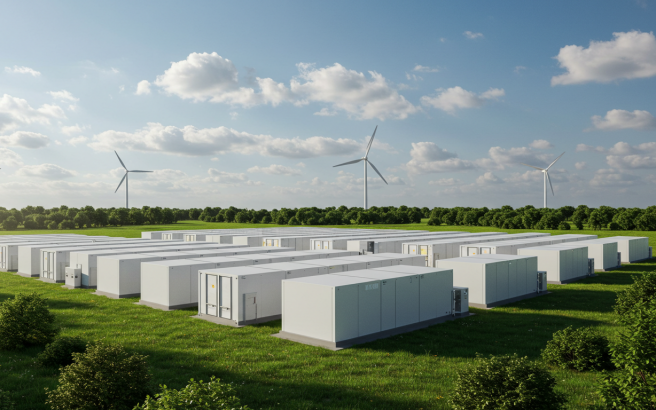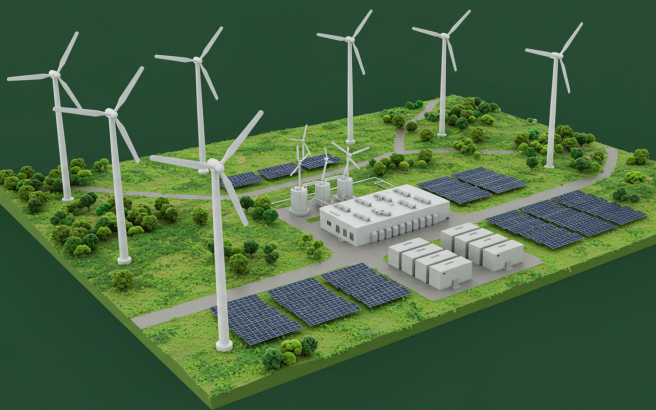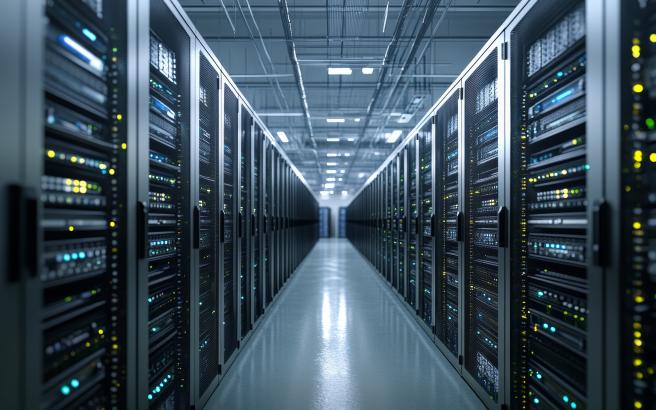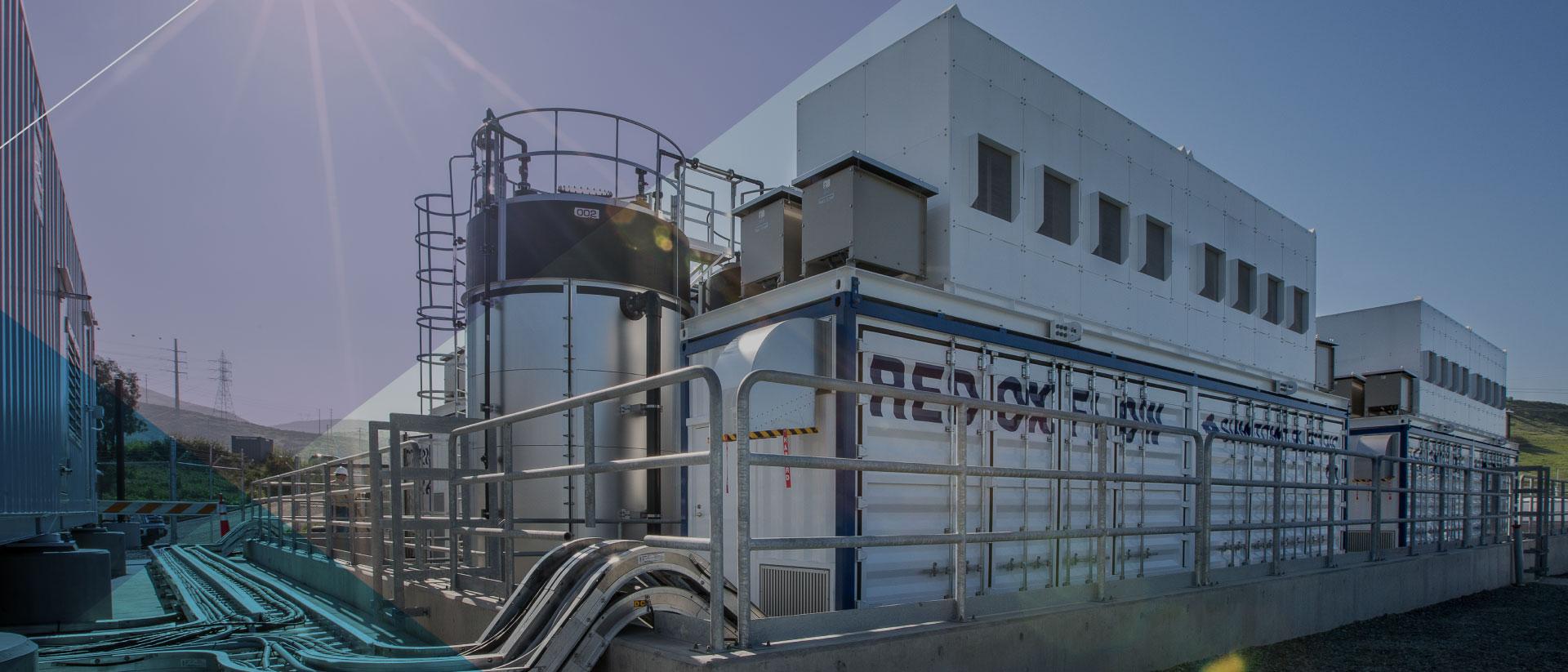
Featured Stories
Understanding the Energy Mix and Why Storage is Key for the U.S. and California
The U.S. energy system is changing fast. Solar and wind are growing, while coal is fading. But without better energy storage, keeping the grid stable won’t be easy. How will the country balance clean energy growth with reliability?
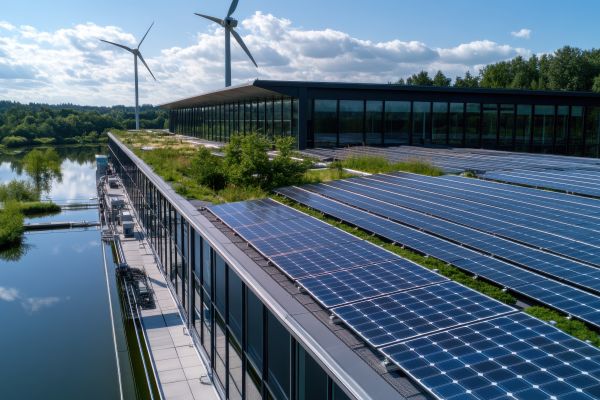
◇ What is the Energy Mix?
The energy mix refers to the combination of different energy sources used to meet a region’s power needs. In the U.S., this includes renewable energy (like solar and wind), clean energy (such as nuclear), and traditional fossil fuels. The shift toward sustainable energy is accelerating, with a stronger focus on reducing carbon emissions and increasing battery storage solutions.
◇ How the U.S. and California Are Shaping Their Energy Mix
According to the U.S. Energy Information Administration (EIA), as of 2023, the country's electricity generation was made up of:
- 38% Natural gas
- 34% Petroleum (crude oil and natural gas plant liquids)
- 8% Renewable energy (solar, wind, hydro, etc.)
- 11% Coal
- 8% Nuclear electric power
◇ How the U.S. Energy Mix is Changing (2025-2026 Forecasts)
The U.S. energy landscape is shifting toward clean energy, with renewable energy expected to grow significantly over the next two years. According to the EIA's latest Short-Term Energy Outlook (STEO):
- Solar power capacity will increase by 26 GW in 2025 and 22 GW in 2026.
- Wind power capacity will grow by 8 GW in 2025 and 9 GW in 2026.
- Coal power retirements will accelerate, removing 11 GW (6%) of capacity in 2025 and another 4 GW (2%) in 2026.
- Natural gas generation is expected to decline by 3% in 2025 and 1% in 2026, but it will remain the largest source of U.S. electricity.
- Renewable energy will account for 1,058 billion kWh in 2025 (+12% from 2024) and 1,138 billion kWh in 2026 (+8%).
- Nuclear power generation will grow slightly, reaching 796 billion kWh in 2025 (+2%) and 800 billion kWh in 2026 (+1%).
◇ California’s Clean Energy Transition
California is leading the push for 100% clean electricity by 2045 and has made significant progress. According to CalMatters, in 2024, 54% of the state’s electricity came from renewable sources, compared to the U.S. average of 40%.
- Expanding Battery Storage: According to Governor of California, as of October 2024, California’s battery storage capacity grew by 30%, reaching 13,391 MW.
- More Renewable Energy: According to Environment California, during a 116-day period in 2024, solar power generation in California increased by 31%, wind power by 8%, and battery usage for power by 105% compared to the same period in 2023. As a result, fossil gas electricity generation dropped by an estimated 40%.
◇ Why Long-Duration Energy Storage (LDES) is Critical
As renewable energy grows, battery storage—especially long-duration energy storage (LDES)—will be essential for a stable power supply.
- Stabilizing Renewable Energy
Solar and wind power are unpredictable. Battery storage systems help store excess energy when production is high and release it when demand increases.
- Reducing Dependence on Fossil Fuels
Sustainable energy sources can only replace fossil fuels if they are backed by reliable storage solutions. LDES makes it possible to store energy for hours or even days, ensuring a consistent power supply.
- Enhancing Grid Resilience
Extreme weather and power outages are increasing. LDES provides a backup power source, making the grid more reliable. According to CalMatters, California had 100 days in 2024 with 100% carbon-free, renewable electricity for at least part of each day. Thanks to new clean energy resources and the surge in battery storage, the state’s power grid withstood July’s record two-week heat wave—and even exported power to other states.
◇ Conclusion
The U.S. and California are making significant progress toward clean energy, but the transition depends on effective battery storage solutions. Investing in long-duration energy storage is crucial for stabilizing the renewable energy supply and achieving a truly sustainable energy future.
References:
- U.S. Energy Information Administration. (n.d.). U.S. energy facts explained. Retrieved from https://www.eia.gov/energyexplained/us-energy-facts/
- U.S. Energy Information Administration. (2024). Renewable energy growth and coal retirements in 2025-2026. Retrieved from
https://www.eia.gov/todayinenergy/detail.php?id=64364
- CalMatters. (2024). California clean power progress: The state’s push for renewable energy. Retrieved from https://calmatters.org/environment/climate-change/2024/08/california-clean-power-progress-grid/
- Environment America. (2024). California’s 2024 renewable electricity supply soared, helping to avoid blackouts and cost increases. Retrieved from https://environmentamerica.org/california/updates/californias-2024-renewable-electricity-supply-soared-helping-to-avoid-blackouts-and-cost-increases/
- Office of Governor Gavin Newsom. (2024). California exceeds another clean energy milestone. Retrieved from https://www.gov.ca.gov/2024/10/15/california-exceeds-another-clean-energy-milestone/
Follow us on LinkedIn!
If you enjoyed this Feature Story, be sure to follow Sumitomo Electric U.S.A on LinkedIn. We share updates there whenever new stories are published. (Note: Sumitomo Electric Group also has a global LinkedIn account for corporate updates.)
